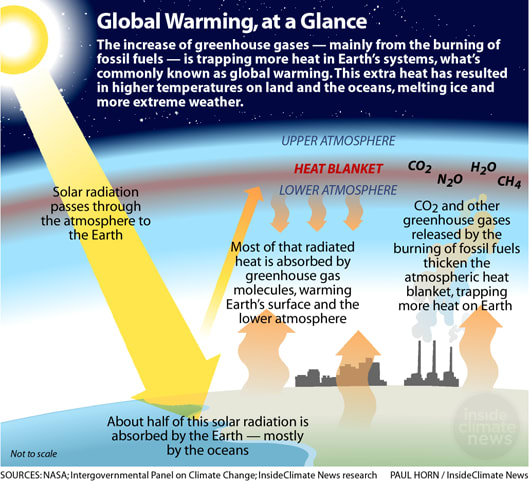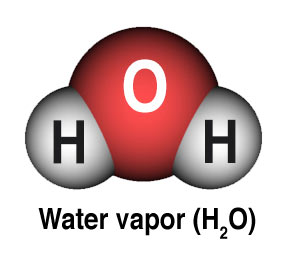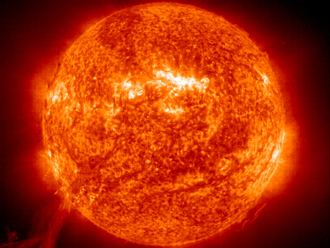So, in Part 1, we looked at the basics and got a glimpse of the evidence we have for climate change. Today, let us look behind the scenes at how it all works.
The Greenhouse Effect
The warming of our planet is attributed to a human amplified greenhouse effect – warming that occurs when heat radiating from the Earth and headed toward space is trapped by our planet’s atmosphere. Global warming is essentially the result of an increase in this greenhouse effect.
On its own, the greenhouse effect is not bad. It is actually a natural circumstance of the Earth’s atmosphere. It is also the reason why the Earth is warm enough for life to thrive.
Life on Earth depends on the energy our planet receives from the Sun. About half of that energy, in the form of light, passes through our planet’s atmosphere and reaches the surface where it gets absorbed. It is then released back upward in the form of infrared radiation or heat. Most of this heat is then absorbed by greenhouse gases and returned back toward the surface.
Lets make this quantitative.
When sunlight reaches our planet, 30% of it gets reflected or scattered back to space by clouds, dust, and the Earth’s surface. More than 20% of the sunlight is absorbed in the atmosphere by clouds and water vapor. The remaining 50% is absorbed by the Earth’s surface via land, forests, pavement, oceans, etc.
If all this energy stayed permanently on Earth, our planet would literally be on fire. Thankfully, our oceans and landmasses expel this heat back, some of which makes it into space. Most of it though is absorbed by clouds and greenhouse gases that send them back to the surface.
As the heat doesn’t make it out into space, the planet becomes warmer. It is a heat imbalance scenario where there is less heat leaving the Earth compared to what is coming through our planet’s atmosphere.
A common analogy used to describe the greenhouse effect is to imagine the atmospheric layer of green house gases as a blanket and ourselves as the Earth. Our bodies give off heat which then get absorbed by the fibers of the blanket. The blanket gives off some of that heat to the room. Eventually, there is a balance where the heat leaving the blanket is equal to the heat we produce and our skin, the surface of the Earth, starts to maintain a constant temperature.
The more we add greenhouse gases to our atmosphere the greater the absorption of heat energy from the surface of the Earth. This is like putting on another blanket which results in more layers that our body heat has to pass through to reach the top. This upends the old energy balance and after a while a new energy balance settles in except now we feel warmer than before.

This is what is happening to the Earth. The increased amounts of greenhouse gases being released to our atmosphere, due to human activities, have upset the natural energy balance that was in place since the last ice age. Because of this, the Earth is getting warmer than it was before.
So, what are these greenhouse gases?
Air is composed of 78% nitrogen and 20% oxygen. Neither of these gases are efficient when it comes to absorbing the radiation released by the Earth due to their two-atom structure. On the other hand, gases with three or more atoms can capture energy far out of their scant presence like carbon dioxide, nitrous oxide, methane, chlorofluorocarbons, and to a lesser extent, water vapor. These are the greenhouse gases. These gases keep the Earth inhabitable.
The greenhouse effect is driven by naturally occurring substances in the atmosphere. This is predicated by a natural balance of the energy we receive from our Sun and the energy our planet expels. Unfortunately, this balance has been disturbed since the Industrial Revolution (starting in 1760), as humans began adding greenhouse gases into the atmosphere through the burning of large amounts of fossil fuels. This has only accelerated over the recent decades leading toward an amplified warming of the planet.

The more greenhouse gases we add to the atmosphere, the warmer our planet gets. Lets crunch the numbers on how much these individual gases contribute.
Carbon dioxide (CO2)

Carbon dioxide makes up less than 0.04% of the Earth’s atmosphere, most of which is due to early volcanic activity on our planet. Today, we are pumping huge amounts of the gas into the atmosphere. Carbon dioxide is released through natural processes such as respiration and volcanic eruptions but also through human activities including the burning of fossil fuels, deforestation, land use changes, and plant decomposition, etc. Extra carbon dioxide results in more energy absorption and an overall increase in the Earth’s atmosphere. Since the beginning of the Industrial revolution, we have increased atmospheric carbon dioxide concentration by 48%.
Nitrous Oxide (N2O)

Nitrous oxide is another important green house gas, and while we don’t release great amounts of this gas through human activity, nitrous oxide absorbs much more energy than carbon dioxide. It is produced through soil cultivation practices including the use of commercial and organic fertilizers, nitric acid production, and the burning of biomass and fossil fuels. The use of nitrogen fertilizers on crops releases nitrous oxide in great quantities.
Methane (CH4)

Methane is a combustible gas, and the main component of natural gas. It also occurs naturally through organic material decomposition. Other man-made processes that produce methane include: extraction from coal, digestive gases in large livestock, bacteria in rice paddies, and garbage decomposition, etc. Like its fellow compatriot greenhouse gases, methane also absorbs infrared energy, and keeps up the heat on Earth.
Chlorofluorocarbons (CFCs)
CFCs are compounds that are entirely industrial in origin. They are most prominently linked with refrigeration systems and used in various applications. Thankfully, their production and release is now regulated by an international agreement largely in part to their contribution to the destruction of the ozone layer.
Water Vapor
The greenhouse gases discussed so far block heat from escaping the Earth. Apart from their devastating effects, it takes a long time for the planet to naturally recycle these gases. For example, a single molecule of carbon dioxide or nitrous oxide can stay airborne for more than a century. Contrastingly, methane has a residence time of one decade. Altogether, greenhouse gases have both a potent and a long-standing impact on the Earth’s ecosystems. These greenhouse gases are described as “forcing” climate change as they do not respond to atmospheric temperature changes.
Water vapor is more a “feedback” gas and responds, physically and chemically, to changes in atmospheric temperature.

Water vapor isn’t a very strong greenhouse gas but makes up for this in sheer abundance. As global temperatures rise, oceans and lakes release more water vapor, up to 7% more for every degree Celsius of warming, which adds to the warming cycle. Thus, it is one of the most important feedback mechanisms that must be monitored in relation to the greenhouse effect.
Can’t changes in the Sun also be responsible for the warming of the Earth?
A common contention to global warming is the notion that the variation in solar irradiance, the amount of energy our Sun gives off in its 11 year periodic cycle, could influence Earth’s warming and cooling trends.

This is wrong.
Satellite data, since 1978, has clearly demonstrated that the Sun isn’t responsible for the warming trend observed over the last several decades. Long-term observations of solar irradiance involving specific indicators such as sun-spot cycles, etc. have further affirmed that changes in solar irradiance cannot account for global warming.
What Next?
Having looked at the major culprits behind climate change, it is now time to acknowledge its very real effects. In Part 1, we looked at specific examples that identify with what is expected of climate change. In Part 3, we will consider a generalized perspective on the implications these changes mean for the global ecosystem.
